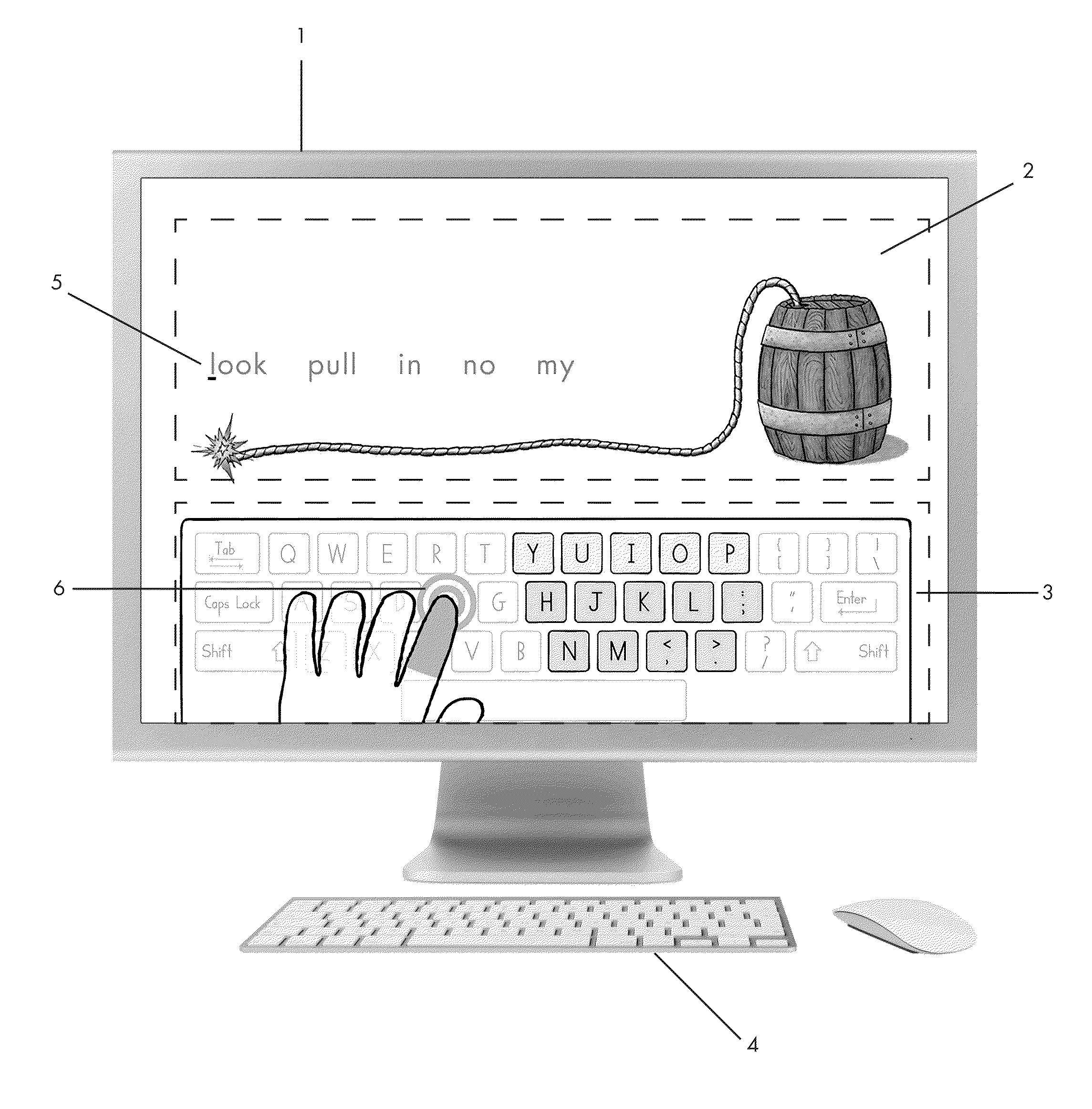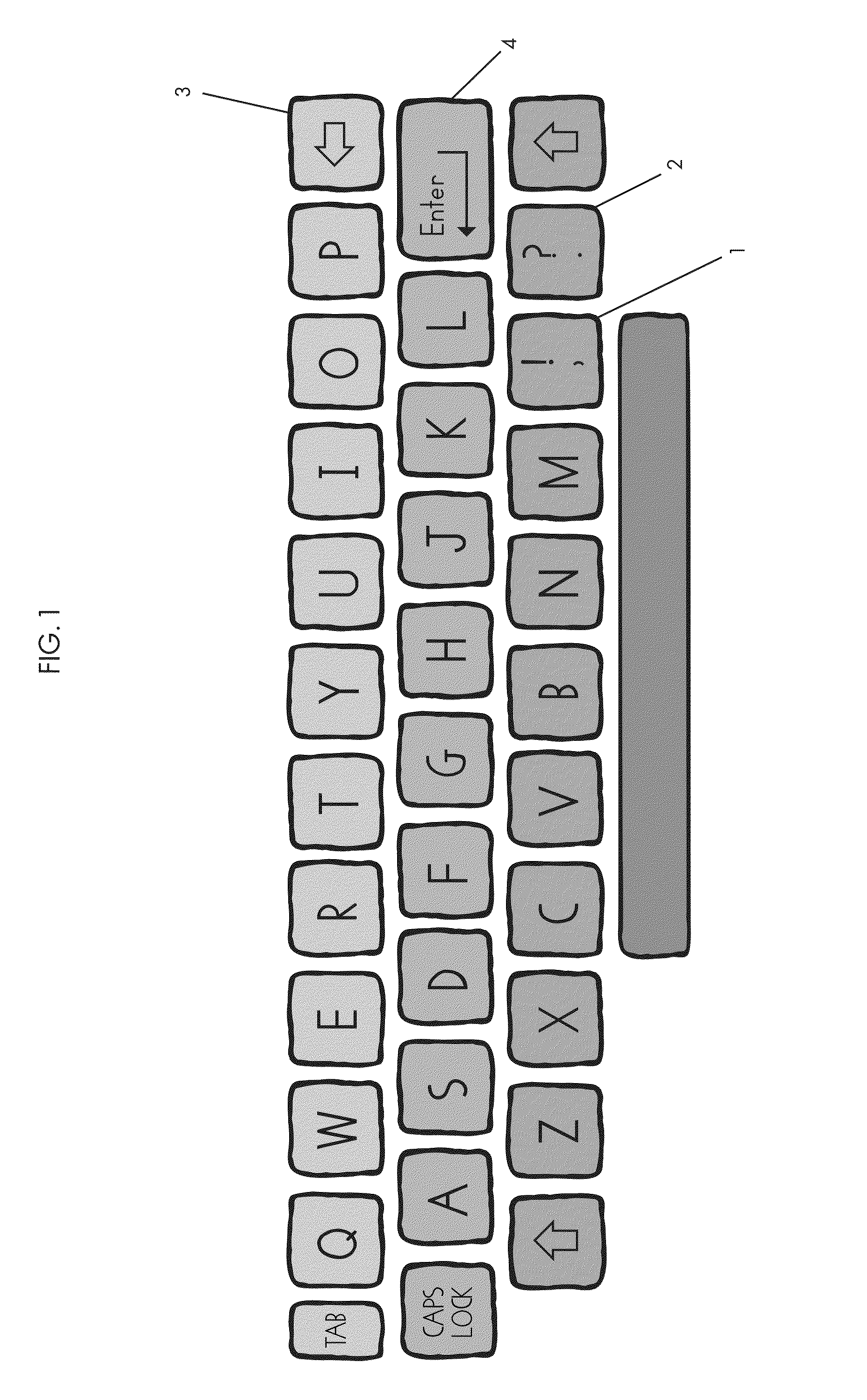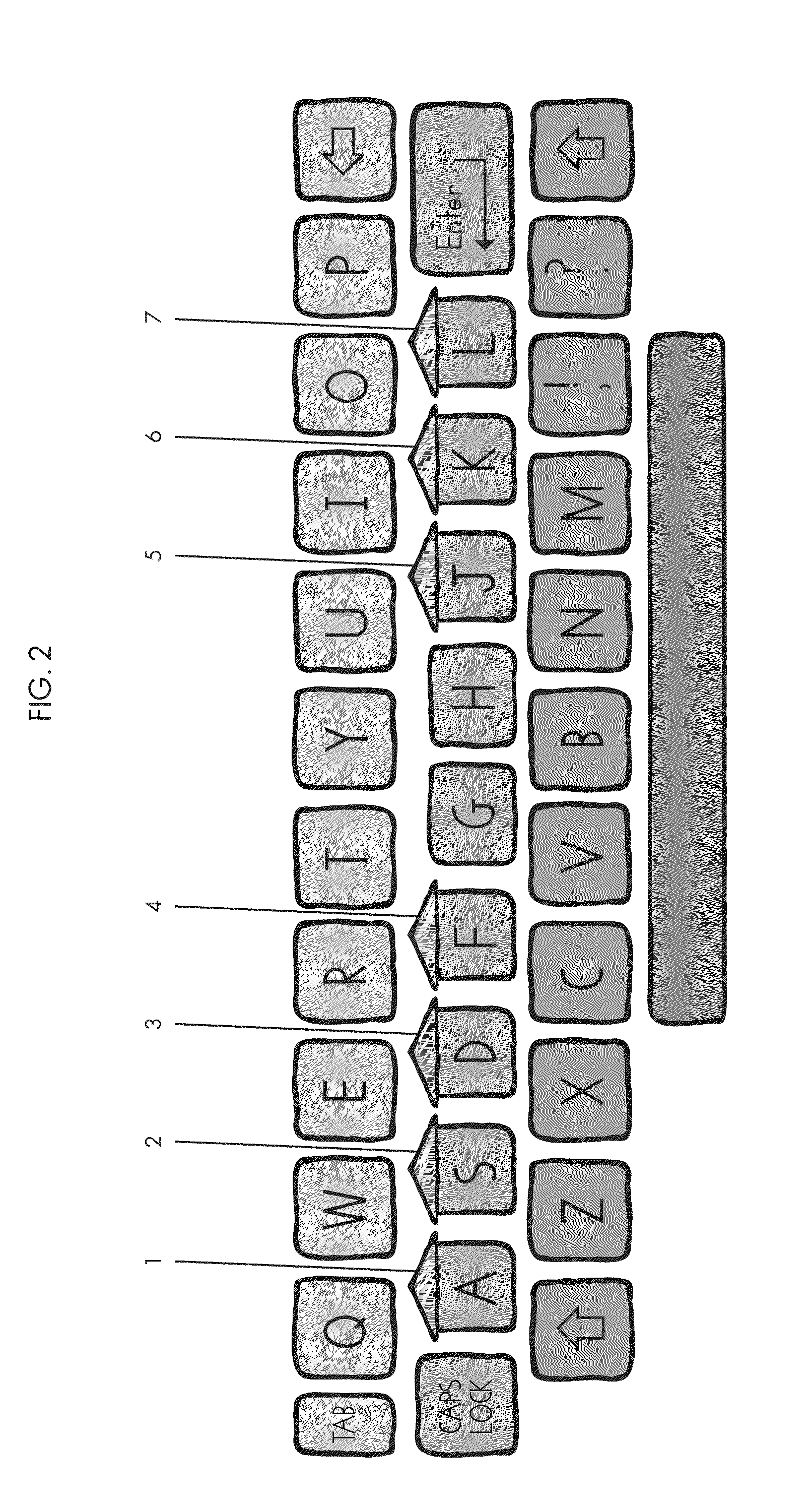System and method for teaching pre-keyboarding and keyboarding
a keyboard and pre-keyboard technology, applied in the field of game-based curriculum, can solve the problems of unhelpful color-coding of the vertical range of movement of the home row, inability to function as a visual clue to cue such movement, and inability to use color to create unnecessary complexity, etc., to achieve simple and more effective teaching, easy-to-learn, and simplify the keyboard
- Summary
- Abstract
- Description
- Claims
- Application Information
AI Technical Summary
Benefits of technology
Problems solved by technology
Method used
Image
Examples
Embodiment Construction
[0119]The detailed description provided hereafter, which references the attached drawings, describes an embodiment of the invention which comprises a software-implemented online curriculum that teaches students foundational pre-keyboarding and keyboarding skills, unilateral hand and finger skills utilizing a row-based visual cuing system, a row-based curricular teaching order, a virtual dynamic keyboard, and a context-sensitive dynamic cursor.
[0120]It should be appreciated that the particular implementations shown and described herein are illustrative of the invention and are not intended to limit the scope of the invention in any way. Furthermore, the conceptual diagrams and connecting lines shown in the various figures contained herein are intended to represent exemplary conceptual, spatial, and functional relationships between various elements of the system and method of the present invention. It should be noted that many alternative or additional conceptual, spatial, and functio...
PUM
 Login to View More
Login to View More Abstract
Description
Claims
Application Information
 Login to View More
Login to View More - R&D
- Intellectual Property
- Life Sciences
- Materials
- Tech Scout
- Unparalleled Data Quality
- Higher Quality Content
- 60% Fewer Hallucinations
Browse by: Latest US Patents, China's latest patents, Technical Efficacy Thesaurus, Application Domain, Technology Topic, Popular Technical Reports.
© 2025 PatSnap. All rights reserved.Legal|Privacy policy|Modern Slavery Act Transparency Statement|Sitemap|About US| Contact US: help@patsnap.com



